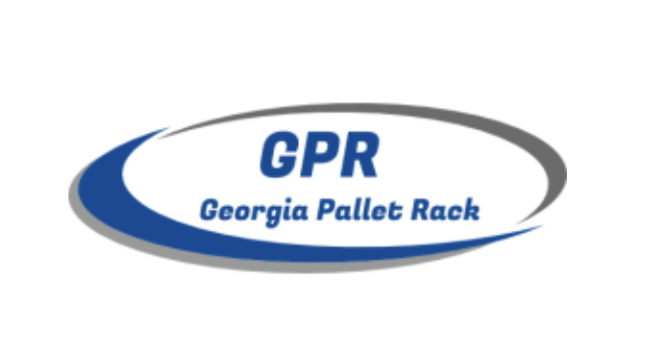How to Avoid Common Warehouse Racking Violations?
- Michael Whitehead
- Aug 6, 2024
- 3 min read

Warehouse safety is critical, as it ensures the well-being of employees working in storage areas where heavy goods are handled. The Occupational Safety and Health Administration (OSHA) plays a vital role in promoting safety standards and regulations that prevent workplace accidents and injuries. According to statistics, warehouses have some of the highest injury rates in various industries, often due to falls, equipment mishaps, and improper racking usage. By prioritizing safety protocols, companies can reduce risks and create a safer working environment.
Common OSHA Violations
OSHA's general duty clause mandates that employers provide a workplace free from recognized hazards. Common violations related to warehouse racking include inadequate training on the use of pallet racks, failure to ensure racking stability, and neglecting to address damaged racks. Specific citations may arise from unmarked or improperly labeled load limits, which can lead to dangerous situations if exceeded.
OSHA Pallet Racking Guidelines
Following OSHA guidelines for pallet racking installation and maintenance is key to preventing accidents and ensuring operational safety.
Installation and Maintenance
Proper installation of pallet racking systems is essential for safety and efficiency. This includes ensuring that racks are level, anchored, and compliant with manufacturer guidelines. Regular inspections and maintenance are critical to identify wear, corrosion, or damage to the racking. Keeping a structured maintenance schedule can significantly mitigate the risk of accidents.
Damage and Repairs
Handling damaged racking should be approached with caution. Any damaged section of racking should be immediately taken out of service until a thorough inspection can be conducted. Repairs should only be executed according to manufacturer specifications, ensuring that any changes do not compromise the integrity of the racking system.
Load Limits and Labeling
Understanding the weight limits of pallet racking is essential to prevent overload, which can lead to catastrophic failures. Proper labeling of load limits and capacity placards is not only a best practice but also a key compliance requirement under OSHA guidelines. Ensuring labels are clear and visible helps maintain safe working conditions.
Detailed Guidelines and Standards
Adhering to specific guidelines, including OSHA and ANSI standards, is essential for maintaining safe and compliant warehouse racking systems.
Specific OSHA Guidelines
OSHA provides comprehensive regulations that pertain to warehouse operations, including racking safety. Relevant standards include OSHA 1910.176(a) and 1910.176(b), which address general requirements for material handling and storage. Adhering to these guidelines helps minimize risk and maintain a safe working environment.
ANSI Standards for Pallet Racking
The American National Standards Institute (ANSI) has set forth standards for pallet racking, codified in ANSI MH16.1-2023. These standards offer guidelines on the design, evaluation, and performance criteria of racking systems. Understanding how to calculate beam length and upright capacity is essential for safe and effective storage solutions.
Compliance Strategies
Implementing effective compliance strategies, such as regular audits and employee training, strengthens safety measures and prevents costly violations.
Regular Safety Audits
Conducting regular safety audits is an essential component of compliance. These audits assess the condition of racking systems and identify any potential hazards, ensuring ongoing adherence to safety regulations. A well-executed safety audit can illuminate areas needing improvement, fostering a proactive safety culture.
Employee Training
Training programs for warehouse staff should focus on racking safety and best practices. Effective training should cover the correct use of equipment, load limits, and identification of risks associated with improper handling of racking systems. Clear communication regarding load capacity and safe usage is critical to preventing accidents.
Practical Solutions for OSHA Compliance
Rack Protection Products
There are various products available designed to protect racking systems from damage, such as guard rails, column protectors, and end-of-aisle barriers. Implementing these protective measures can significantly reduce the risk of racking damage due to collisions with forklifts or other equipment.
Professional Compliance Services
On-site assessments and compliance services can provide invaluable insight into a warehouse’s adherence to safety regulations. Engaging professionals ensures an objective evaluation of racking systems and helps facilitate remediation strategies in alignment with OSHA standards.
Conclusion
Prioritizing warehouse racking safety is crucial for protecting employees and preventing costly accidents. By investing in comprehensive training programs, adhering to OSHA and ANSI guidelines, and conducting regular safety audits, warehouses can create a safer working environment. Implementing practical solutions, such as rack protection products and professional compliance services, further strengthens safety measures. Embracing a culture of safety not only ensures regulatory compliance but also enhances overall operational efficiency. With a proactive approach to safety and maintenance, warehouses can significantly reduce risks and foster a secure workplace for all employees.





Comments